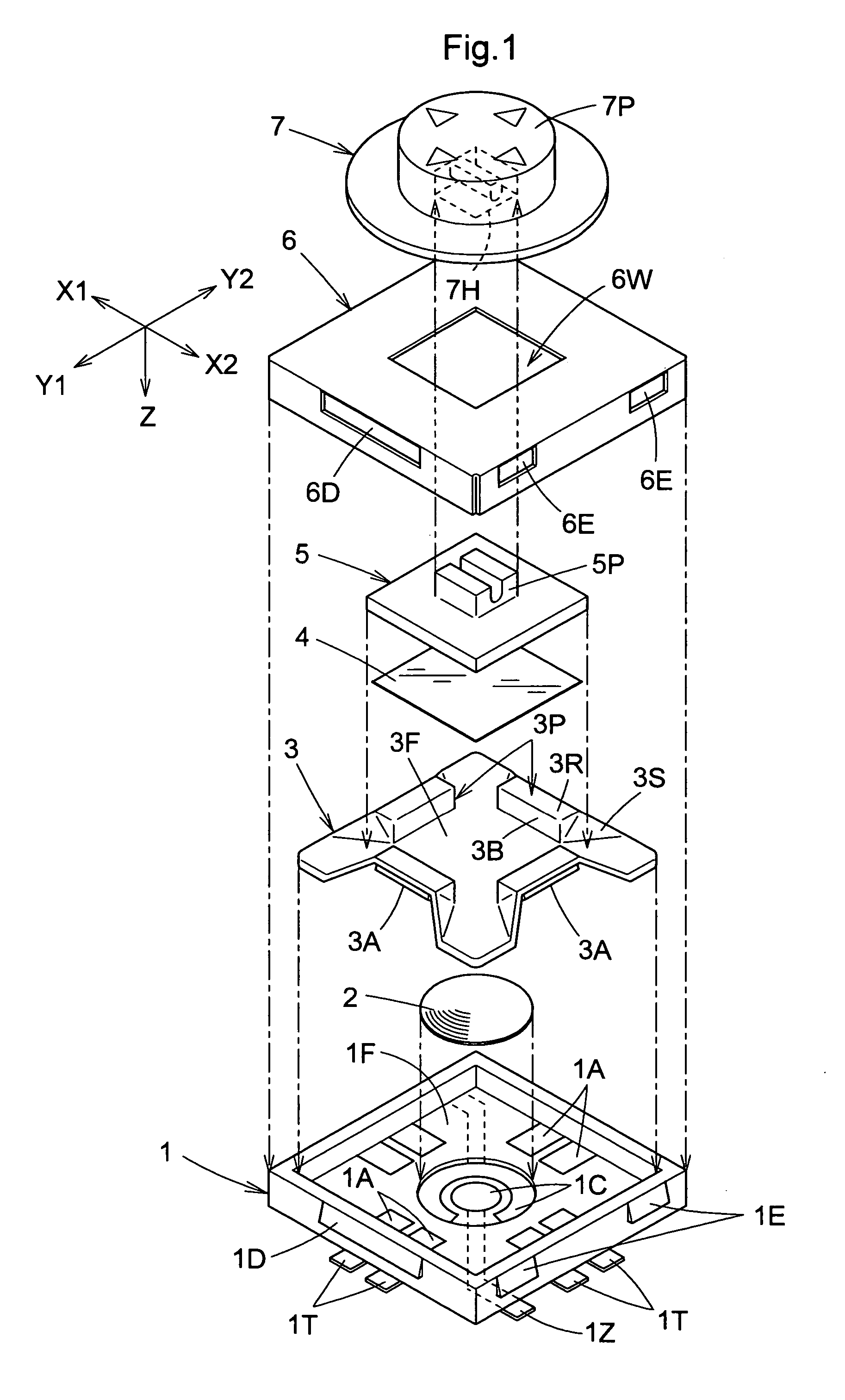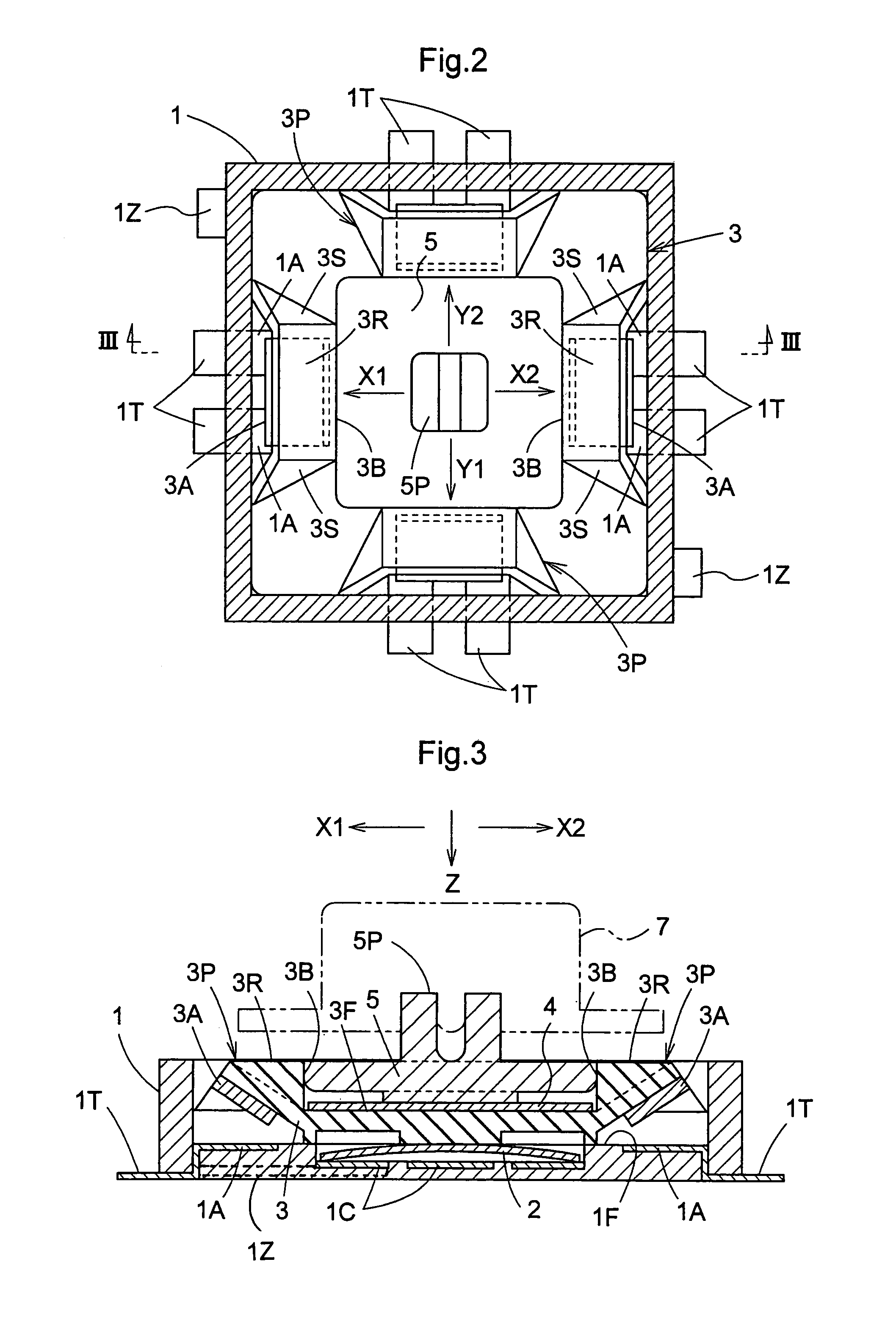Slide switch
a technology of sliding switch and sliding plate, which is applied in the direction of water installations, electrical equipment, construction, etc., can solve the problems of increasing the thickness of the entire switch and the corresponding increase in the number of parts
- Summary
- Abstract
- Description
- Claims
- Application Information
AI Technical Summary
Benefits of technology
Problems solved by technology
Method used
Image
Examples
first modified embodiment
[0092]FIG. 7 is an exploded perspective view of a slide switch in a first modified embodiment of this invention. As shown, a slide switch includes a case 11, a metallic dome 12 acting as a second electric conductor, a biasing member 13, a sheet 14, a slider 15 acting as a slide member, a cover 16 and a keytop 17 successively stacked on upon another.
[0093]The biasing member 13 includes two projections 13P, and the slider 15 is biased to a neutral position pinched between the two projections 13P. The slider 15 is slidable in directions of arrow X1 and arrow X2 against the biasing force of the projections 13P. The cover 16 has a rectangular window 16W which does not obstruct movement in the directions of arrows X1 and X2 of engaging projections 15P of the slider 15, but restricts movement in directions perpendicular to the directions of, arrows X1, X2 and Z (e.g. directions of arrows Y1 and Y2 shown in FIG. 1).
[0094]The window 16W of the cover 16 may be reduced in size to restrict move...
second modified embodiment
[0097]This invention of course is not limited to slide switches performing two types of operations, i.e. the sliding operation and depression, but is applicable also to slide switches without the depression mode.
[0098]FIG. 8 is an exploded perspective view of a slide switch in a second modified embodiment of this invention. As shown, the slide switch includes a case 21, a biasing member 23, a sheet 24, a slider 25 acting as a slide member, a cover 26 and a keytop 27 successively stacked on upon another.
[0099]The case 21 includes at least one electrode pair 21A arranged on the bottom. The biasing member 23 includes projections 23P each having a back wall portion extending upward from a flat floor portion for biasing the slider 25 to a neutral position, and an electric conductor 23A disposed opposite the back wall portion. In the example shown in FIG. 8, electrode pairs 21A are arranged at four edges of the bottom of the square case 21, and the projections 23P are provided at four edg...
third modified embodiment
[0101]FIG. 9 is an exploded perspective view of a slide switch in a third modified embodiment of this invention. As shown, the slide switch includes a case 31, a biasing member 33, a sheet 34, a slider 35 acting as a slide member, a cover 36 and a keytop 37 successively stacked on upon another.
[0102]In this embodiment, the biasing member 33 includes two projections 33P, and the slider 35 is biased to a neutral position pinched between the two projections 33P. The slider 35 is slidable in directions of arrow X1 and arrow X2 against the biasing force of the projections 33P. The cover 36 has a rectangular window 36W which does not obstruct movement in the directions of arrows X1 and X2 of engaging projections 35P of the slider 35, but restricts movement in directions perpendicular to the directions of arrows X1, X2 and Z (e.g. directions of arrows Y1 and Y2 shown in FIG. 1).
[0103]The window 36W of the cover 36 may be reduced in size to restrict movement in one of the directions of arro...
PUM
 Login to View More
Login to View More Abstract
Description
Claims
Application Information
 Login to View More
Login to View More - R&D Engineer
- R&D Manager
- IP Professional
- Industry Leading Data Capabilities
- Powerful AI technology
- Patent DNA Extraction
Browse by: Latest US Patents, China's latest patents, Technical Efficacy Thesaurus, Application Domain, Technology Topic, Popular Technical Reports.
© 2024 PatSnap. All rights reserved.Legal|Privacy policy|Modern Slavery Act Transparency Statement|Sitemap|About US| Contact US: help@patsnap.com










